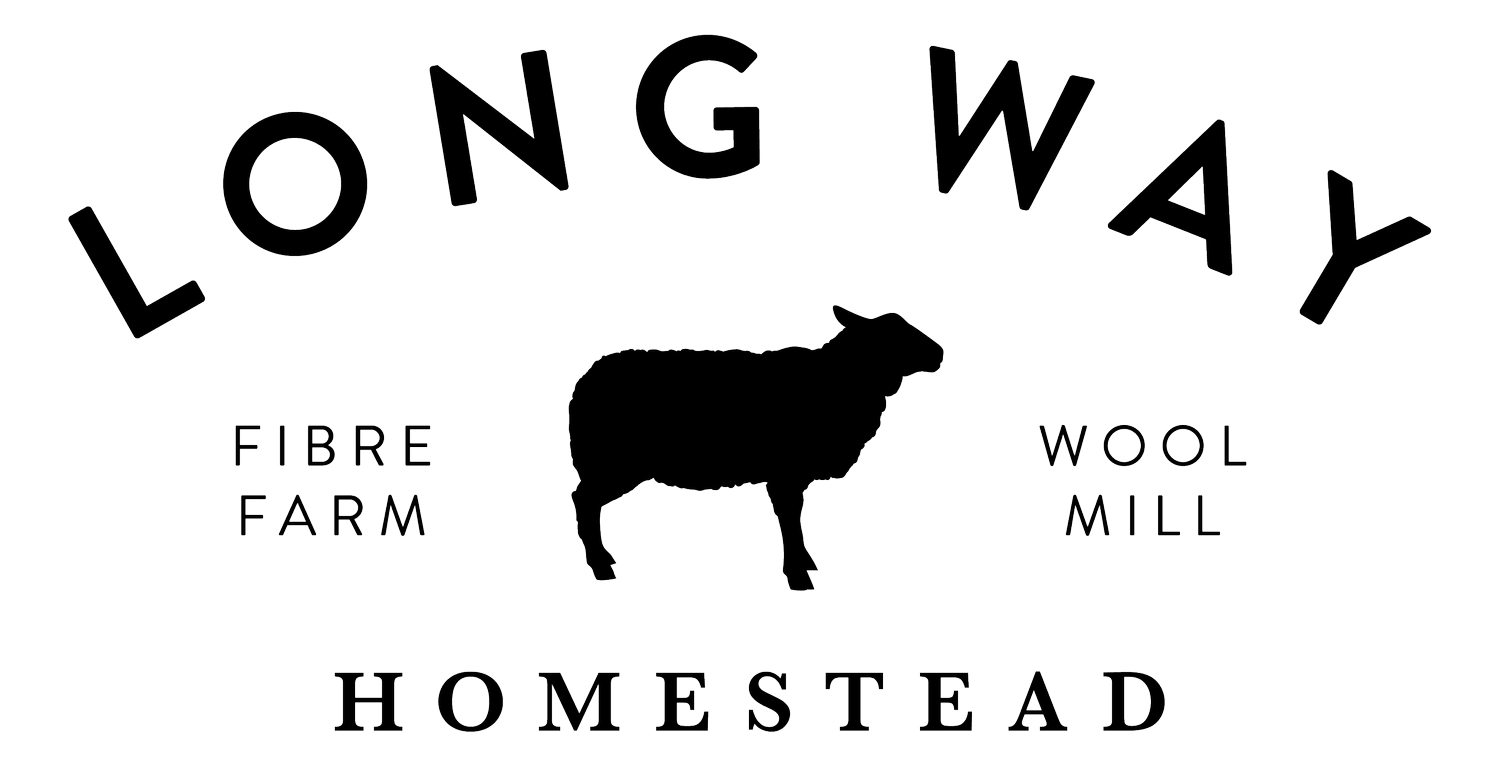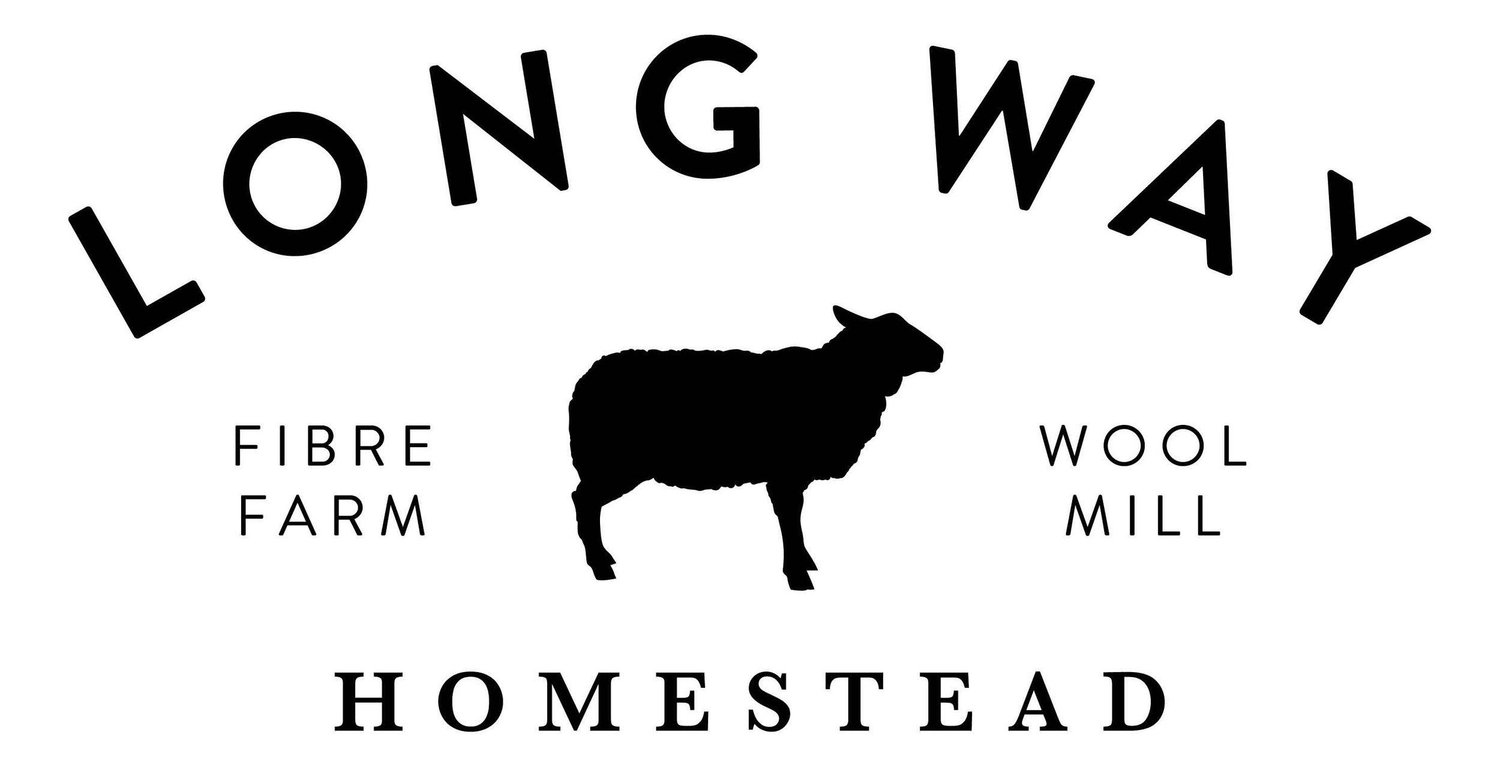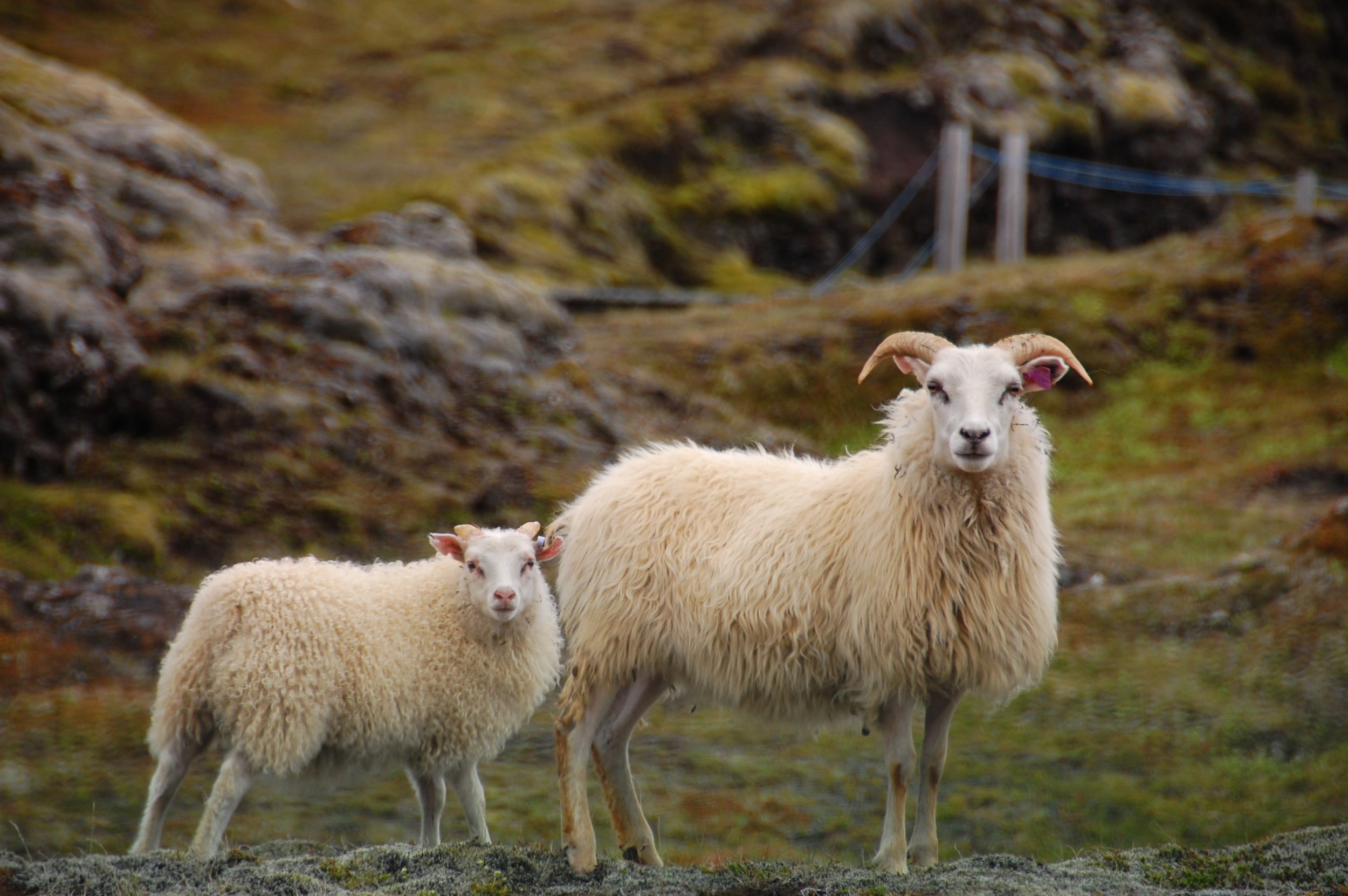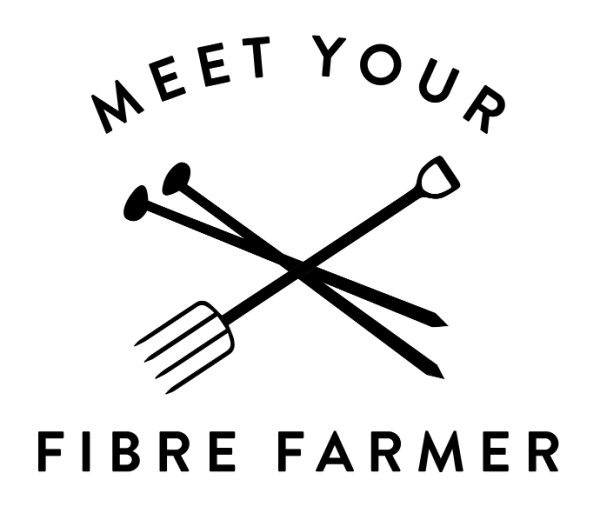Icelandic
Icelandic sheep first came to iceland with the viking settlers around 930 CE, and since then it's been illegal to introduce new sheep to iceland.
The breed has been developed in isolation and is one of the purest breeds in the world. It makes up 25% of the agriculture revenue in iceland for both meat and wool. The first icelandic sheep were brought to N. America in 1985 in Ontario.
Icelandic wool is double coated, the coarse outer wool is called the 'tog' and the soft undercoat is called the 'thel' when the two are loosely spun together the yarn is called 'lopi'. The thel fibre can be fine enough for next to skin wear, but the tog can be more coarse and with lots of strength. Icelandic sheep have a variety of natural colours including white, tan, brown, gray, black and a mix of those.
Icelandic wool is very warm and will do excellent for outwear sweaters and jackets (picture the icelandic sweaters that have become so popular) they also make excellent mittens, leg warmers and other outerwear items.The white wool takes dye well and overdyeing the natural colours can produce beautiful shades.
There are many small-scale icelandic sheep farm in Manitoba, as we also have a large icelandic population. Processing Icelandic wool is more complex because of the vastly different staple lengths, it is most often spun as a single ply, but if the sheep are shorn more than once year, the fibre an be spun as a plied yarn.
Staple length: outercoat: 4 - 18" undercoat 2-4"
Fibre diameter: outercoat 27 - 31 microns, undercoat 19-22 microns
Fleece weight is between 4 - 7 lbs
Structure: triangular staple lenght (you can clearly the tog and thel in this photo)
Our Icelandic wool is sourced from local historian and Icelandic genealogist Nelson Gerrard. He raises purebred Icelandic sheep on his farm in Gimli Manitoba
Coming Soon







